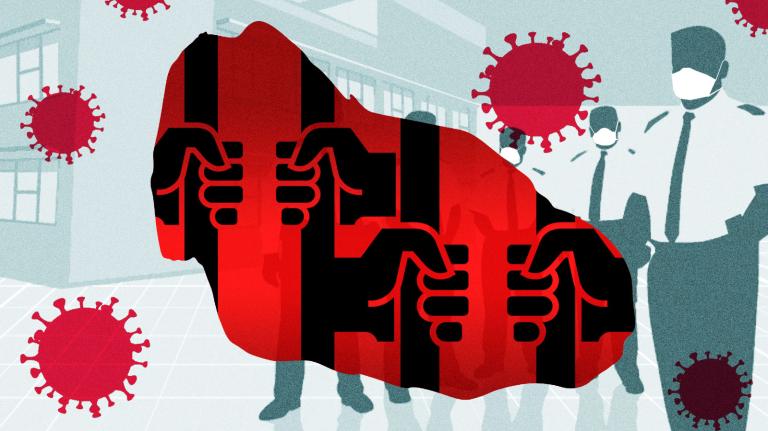Dirty air in the United States is linked to higher death rates from COVID-19, according to a new study from researchers at Harvard’s school of public health. Scientists found that people who lived in counties in with elevated levels of fine particulate matter known as PM 2.5 in the air were more likely to die from the virus.
PM 2.5 is one of the world’s most dangerous invisible pollutants. It’s made up of tiny particles (smaller than 2.5 micrometers across) that can seep into human lungs and bloodstreams. It comes from automobile exhaust and dirty power plants, as well as from burning wood and coal. Many studies have linked high levels of PM 2.5 to heart disease, chronic bronchitis, diabetes, and other respiratory illnesses. Researchers have estimated that PM 2.5 contributed to 4.2 million deaths worldwide in 2015 alone.
According to the Harvard analysis, which has yet to be peer reviewed, just a small increase in long-term levels of PM 2.5 — even one microgram per cubic meter of air — could increase COVID-19 death rates by 15 percent.
“This is a very strong indication that air pollution is associated with death from COVID-19,” said Zuofeng Zhang, a professor of epidemiology at the University of California, Los Angeles, who was not involved in the Harvard study.
Part of the explanation, Zhang said, was that polluted air is linked to some of the underlying conditions that make COVID-19 more fatal. Seventy-eight percent of U.S. patients who have ended up in intensive care units from COVID-19 have underlying health conditions such as diabetes, heart disease, or chronic lung disease.
The Harvard study controlled for factors like household income, population size, hospital beds, and smoking rates. But analyzing COVID-19 in the middle of the outbreak presents problems. The authors noted that it’s difficult to “accurately quantify the number of COVID-19 cases due to limited testing capacity.” Counties around the country are at different stages of the pandemic — and have varying testing capacities, which could significantly skew results.
Because the current study only looks at mortality and air pollution at the county level, Zhang cautioned that “it’s hard to show a very solid causal relationship” between the two factors. Zhang said that they need to be examined on an individual level, with a much more detailed dataset of COVID-19 patients.
But scientists have seen this phenomenon before. In 2003, researchers found that regions of China with high levels of air pollution saw more deaths from severe acute respiratory syndrome, or SARS, a disease closely related to COVID-19. Recent research from scientists in Italy has also found a correlation between atmospheric pollution and high COVID-10 death rates.
Ideally, this research would encourage policymakers to allocate resources to protect communities hardest-hit by pollution and COVID-19. At the moment, however, the Trump administration has been heading in the opposite direction, using the coronavirus to weaken environmental regulations meant to protect the public from dangerous air pollution. The Environmental Protection Agency has even stopped routine monitoring of some industries, endangering towns and cities already threatened by a global pandemic.




